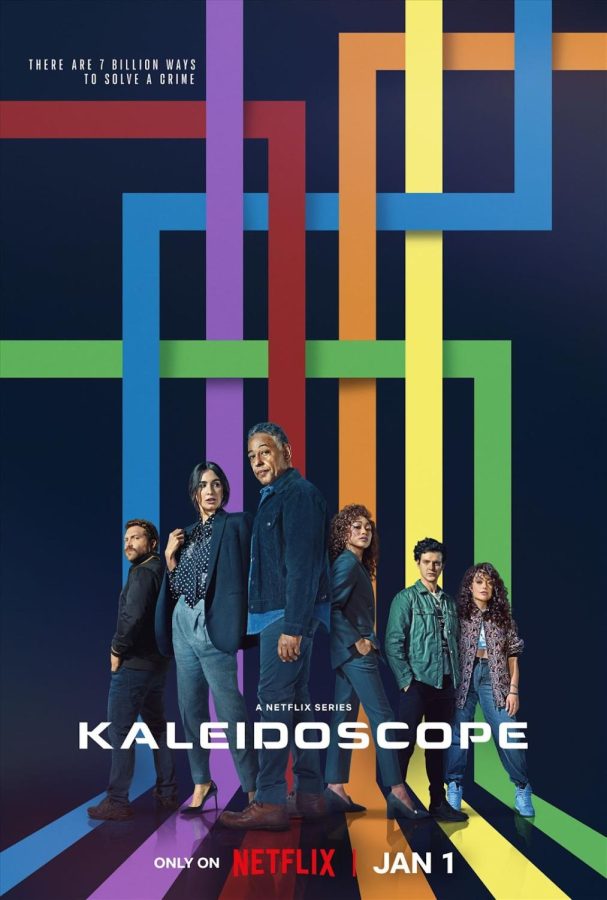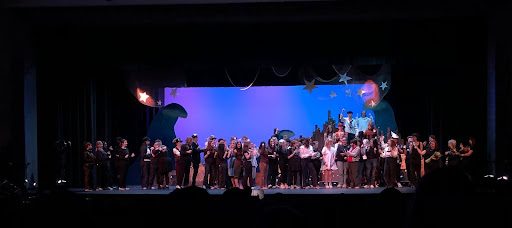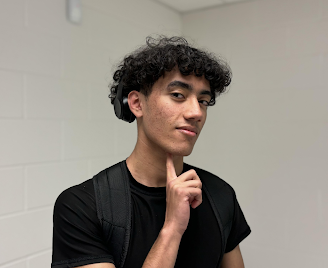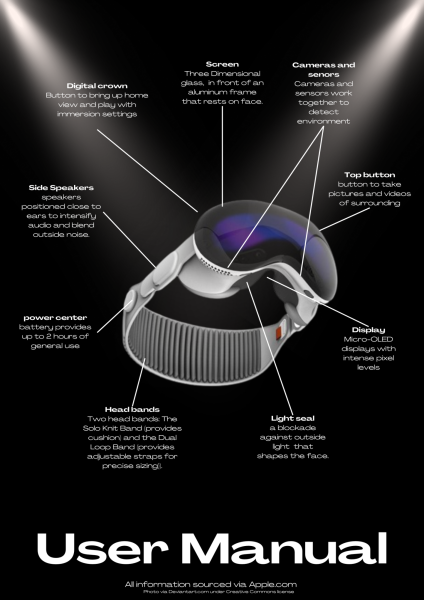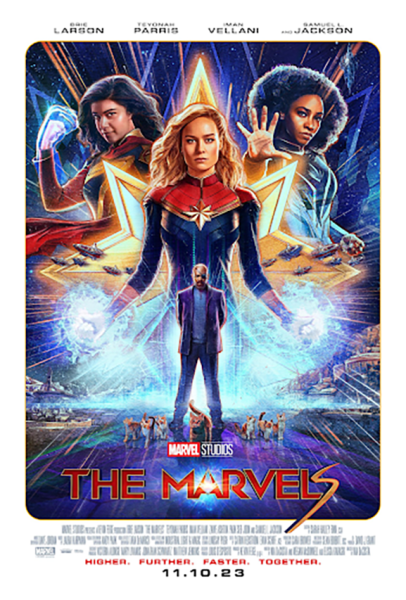“Kaleidoscope” shakes up the future of storytelling
Photo courtesy of IMDb
The official poster for “Kaleidoscope.” Much like an actual kaleidoscope, in which the designs inside are changed by shaking or rotating the toy, there are endless different ways to view this story.
The new Netflix original “Kaleidoscope” is experimenting with a unique format of storytelling rarely seen in today’s TV shows and movies.
“Kaleidoscope” tells a story through a non-linear format. The show has eight episodes, each named after a color. Netflix randomizes the order in which the episodes are displayed for every viewer. Episodes aren’t numbered, so viewers are able to pick whichever order they want. The exception to this is the episode “White,” which is meant to be watched last.
“I think the fact that the order doesn’t matter adds a new level of complexity to the show,” said senior Ethan Le. “I haven’t tried watching in any other order, though I’m sure it affects perspectives and what someone anticipates the heist episode to be like.”
The episode “White” is when the actual heist takes place, so the randomization of the episodes before that is meant to give each viewer a different perspective of the storyline and the characters leading up to it.
“I felt like I found out things that people wouldn’t have found out if they watched in a different order,” said junior Andy Ramzy.
For some, however, this made the storyline confusing rather than intriguing.
“The random order made things very confusing for me, because one second I had the full backstory, and the next I was experiencing the weeks following the heist,” said sophomore Christina Nguyen. “I had trouble remembering certain events and characters who were introduced in the episodes I didn’t get to yet.”
This format made it more difficult for Nguyen to form connections to the characters. Despite the mixed reviews, however, the structure of “Kaleidoscope” was definitely an interesting concept.
“‘Kaleidoscope’ did accomplish its goal [of creating more interactive storytelling], as many people watched it because of the order, or lack thereof,” said Le. “It was fun to watch, like most heist movies, but the show’s randomization of order was a fun twist.”
Given the varied responses to the show, it may be a while before other shows start experimenting with a similar format.
“I think storytelling in an interactive form is something the media should do more often,” said Nguyen. “I had high hopes for ‘Kaleidoscope,’ but I feel like the ending episode was a letdown after the rollercoaster I went through.”
The reception of the show itself, besides the aspect of the non-linear format, was pretty mixed as well.
“I loved the story and the heist a lot; the character motivations were perfect, and the choices certain characters made were sometimes frustrating but totally justified,” said Ramzy.
Ramzy also applauded the positive Middle Eastern representation in the show.
“There wasn’t anything special about the show besides the concept and hype of a randomized viewing order,” said Nguyen. “I didn’t find myself rooting for a certain character due to the different viewpoints.”
Overall, though “Kaleidoscope” took a good first step in creating more interactive storytelling in media, the idea could have been executed in a better way. Hopefully, the concept of the show inspires future creators to take more non-conventional approaches with their stories.
“It was such a cool, unique experience and deserves to be explored more,” said Ramzy.

